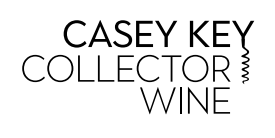- Reviewed by:
- Joe Czerwinski
- Drink Date:
- 2025 - 2045
The 2019 Cabernet Sauvignon Gravelly Meadow features scents of mocha and tree-bark-like oak, nicely highlighting bold cassis and blackberry fruit notes. Full-bodied, rich and velvety, it finishes long, with softly dusty tannins that linger elegantly.
Diamond Creek is one of Napa's historic producers, tucked into a hidden valley on Diamond Mountain at approximately 600 feet above sea level. Founded in 1968 by Al and Boots Braunstein, the couple pioneered the idea of single-vineyard Cabernets, bucking that era's conventional wisdom regarding blending sites and grapes. From the winery and hospitality room, visitors can look out on the property and see Red Rock Terrace below and across to Volcanic Hill. Just up the valley is Gravelly Meadow and, beyond that, the tiny Lake Vineyard. All of the vineyards were originally planted to 88% Cabernet Sauvignon, 8% Merlot and 4% Cabernet Franc, based on the proportions of vines Al started with. In 2020, Diamond Creek was purchased by the Rouzaud family, best known as the owners of Champagne Louis Roederer. In California, Diamond Creek joins Roederer Estate, Scharffenberger, Domaine Anderson and Merry Edwards under their ownership, all managed by President Nicole Carter. Viticulturist and winemaker Graham Wehmeier joined the team at Diamond Creek in 2020, just before vintage. "We picked two vats from one block before the fire, so there's virtually nothing to be bottled," Wehmeier said. The team picked grapes and made wine anyway, trying numerous approaches to mitigate smoke taint. "It was an educational exercise," he said. Winemaking is fairly simple, according to Wehmeier, typically involving a two-day cold soak, inoculated yeasts and just 10–12 days on the skins. "We're using less sulfur and don't add tannins. We sometimes add tartaric, but it's unusual to need it," he said. "If it's legal, it's on the table for me—if you need it. But this is the great thing about a vineyard like this—you just don't need it." Following pressing, the wine goes into 100% new French oak. There's a range of coopers represented in the cellars, but the proportions are the same for each vineyard (as much as volumes allow), so that the differences in taste profile reflect the differences in the vineyards, not the oak regimen. As the vineyards have aged, the yields have fallen. According to Wehmeier, yields in the 1990s were sometimes twice what they are today. In 2018, the property-wide figures were 2.5 tons per acre, while in 2019, yields were two tons per acre. "One year in the 1980s, there were a dozen barrels from Lake, now we're lucky to get one or two." Perhaps understandably, the property will be gradually replanted. Rows of Cabernet Franc and Merlot will be included to honor the original vineyard proportions, while drought-resistant rootstocks will be used to ensure the ability to dry farm. In the meantime, longer cross pieces have been retrofitted to the existing trellising, providing for more dappled light. The vineyards had been no-till for years, but now that's been changed over to "low-till," to mitigate the weeds that Wehmeier says had gotten out of control. Both the 2018 and 2019 vintages are successful here, with a slight edge to the 2019s for their greater depth of fruit and more opulent textures.
Published: Sep 15, 2022

